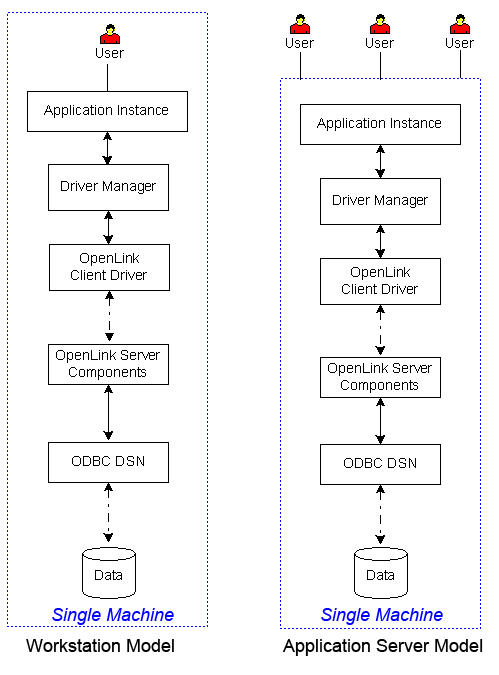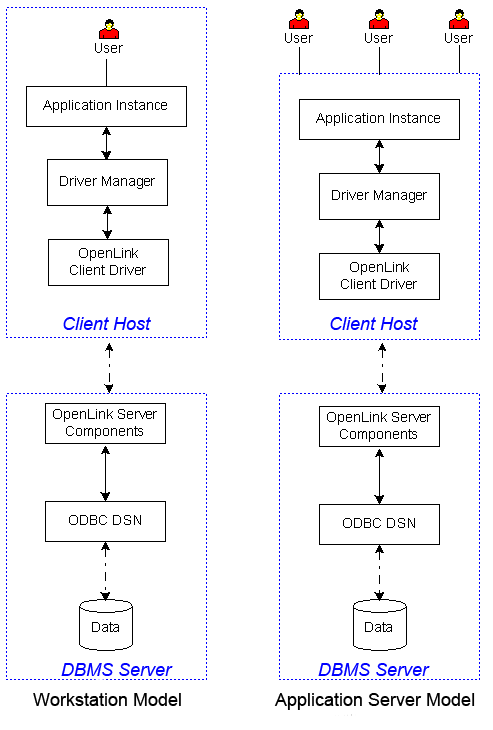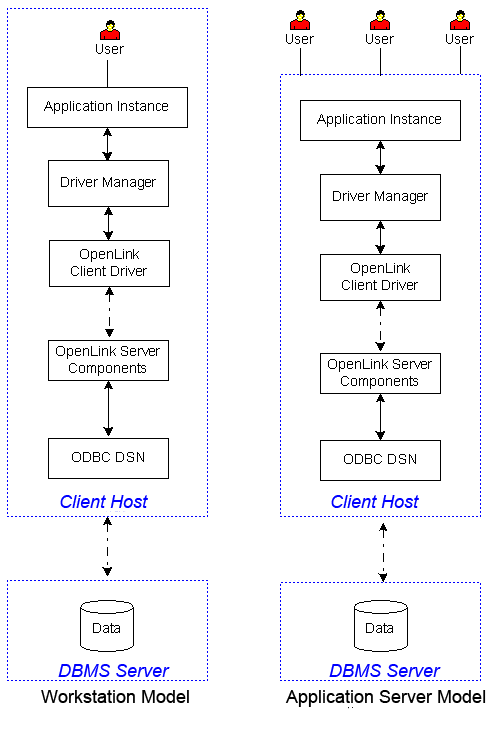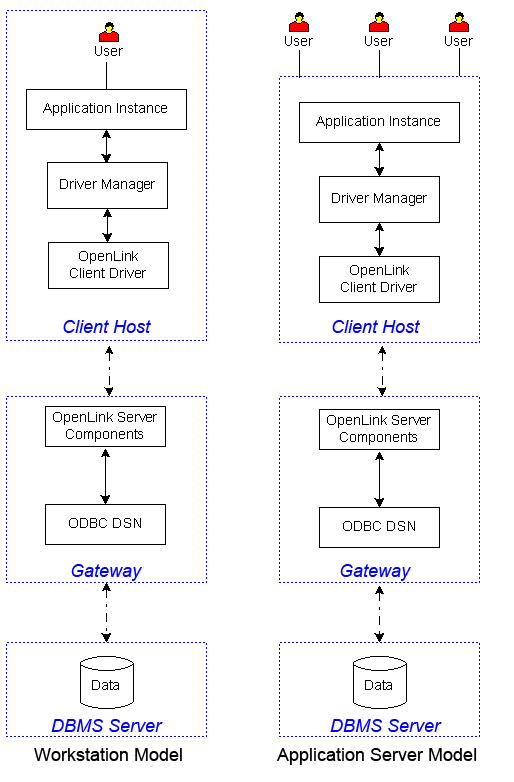Support Architectures - Multi-Tier Drivers
OpenLink's ODBC to ODBC Bridge driver supports the following data access architectures. The Workstation and Application Server designations specify the appropriate license to deploy in a given situation. Workstation licenses apply to architectures in which one user connects to an application instance at one time. Application Server licenses apply to architectures in which multiple users connect to an application instance at one time.
Single Machine Architecture

DBMS Server with Distinct Client Host(s) (DBMS Server Install Required)

DBMS Server with Distinct Client Host(s) (No DBMS Server Install)

DBMS Server with Gateway & Distinct Client Host(s)

 Users are humans or non-human agents that leverage applications to obtain or manipulate SQL data held in data repositories.
Users are identified by the hostname or IP address of the machine which hosts their target application(s).
Users appearing inside bounding box of client machine represent local users and support a client/server architecture.
Users appearing outside bounding box represent remote users and indicate an application server model.
Users are humans or non-human agents that leverage applications to obtain or manipulate SQL data held in data repositories.
Users are identified by the hostname or IP address of the machine which hosts their target application(s).
Users appearing inside bounding box of client machine represent local users and support a client/server architecture.
Users appearing outside bounding box represent remote users and indicate an application server model.
 The application instance refers to individual instances of applications that users exploit in the target architecture.
Each instance of the application(s) is tasked with returning SQL data to users in a manner that is meaningful to them.
The application instance refers to individual instances of applications that users exploit in the target architecture.
Each instance of the application(s) is tasked with returning SQL data to users in a manner that is meaningful to them.
 The driver manager is a generic utility that loads drivers when requested to do so by client applications.
The driver manager is a generic utility that loads drivers when requested to do so by client applications.
 The
The  Database native client refers to third-party database client communications software that facilitates connectivity to the target data store.
This software speaks the native protocol of that data store.
Database native client refers to third-party database client communications software that facilitates connectivity to the target data store.
This software speaks the native protocol of that data store.
 ODBC DSN or JDBC URL refers to ODBC data sources or JDBC connection URLs that pre-exist on the client system.
These DSNs or JDBC URLS often use 3rd-party data access products, but they may use
ODBC DSN or JDBC URL refers to ODBC data sources or JDBC connection URLs that pre-exist on the client system.
These DSNs or JDBC URLS often use 3rd-party data access products, but they may use  The
The  Data refers to SQL data that is contained in the target data store.
Data refers to SQL data that is contained in the target data store.
 Local IPC communications between architectural components.
Local IPC communications can only occur when architectural components are hosted on the same, physical machine.
Local IPC communications between architectural components.
Local IPC communications can only occur when architectural components are hosted on the same, physical machine.
 TCP/IP-based communications between architectural components.
TCP/IP-based communications can occur across machine boundaries.
TCP/IP-based communications between architectural components.
TCP/IP-based communications can occur across machine boundaries.
